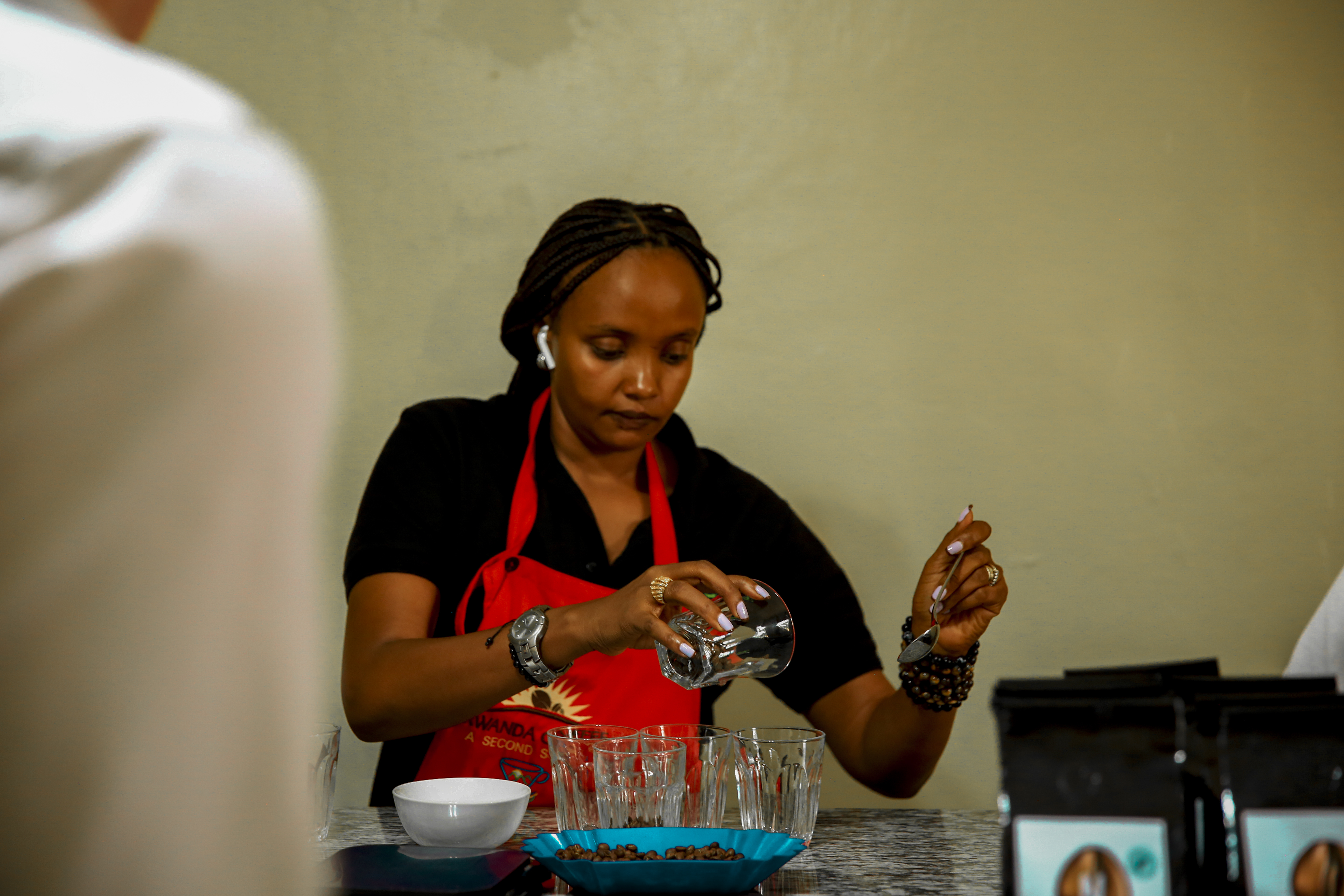
here’s more to enjoying coffee than a quick morning pick-me-up. For coffee enthusiasts and professionals, coffee cupping is a serious business. It’s a sensory evaluation process that allows you to savor and assess the unique flavors and aromas of coffee beans. Whether you’re a seasoned pro or a novice, here are some tips to help you elevate your coffee cupping experience.
1. Choose High-Quality Beans: The foundation of any successful cupping session is the coffee beans themselves. Opt for freshly roasted beans that are sourced from reputable suppliers. Beans from different regions have distinct flavor profiles, so experiment with various origins to expand your palate.
2. Prepare Your Space: Cupping is a precise practice that requires a quiet and controlled environment. Ensure that you have good lighting, a clean workspace, and minimal distractions to focus on the coffee’s nuances.
3. The Grinder Matters: Invest in a quality burr grinder. Consistency in grind size is key for a balanced cupping experience. A medium-coarse grind is usually ideal, similar to breadcrumbs.
4. Use Clean, Filtered Water: The quality of your water matters as much as the coffee. Use filtered water at a temperature of 195-205°F (90-96°C) for brewing. Inconsistent water can greatly affect your results.
5. Cupping Bowls and Spoons: Use standardized cupping bowls with wide rims that allow you to inhale the coffee’s aroma. Special cupping spoons with shallow bowls are designed to sip and slurp the coffee effectively.
6. Follow the SCAA Protocol: The Specialty Coffee Association of America (SCAA) has established a standardized protocol for coffee cupping. This helps ensure consistency in your evaluations and results.
7. Smell the Dry Grounds: Start by smelling the dry coffee grounds before adding water. This initial fragrance can give you a hint of what to expect in the cup.
8. Brew Time: Allow the coffee to steep for about 4 minutes. This allows the coffee to fully bloom and develop its flavors.
9. Breaking the Crust: After the steeping time, gently break the crust that forms on the coffee’s surface. Take a moment to inhale the aromatic explosion. This step is crucial for assessing the coffee’s fragrance.
10. Slurping and Tasting: When tasting, take a small spoonful and slurp it, allowing the coffee to aerate in your mouth. This helps to evaluate the flavor, acidity, body, and aftertaste. Take notes on your observations.
11. Scoring the Coffee: Use a standardized scoring sheet to record your findings. Parameters usually include aroma, flavor, aftertaste, acidity, body, balance, and overall impression.
12. Compare and Contrast: To fully appreciate a coffee’s qualities, compare it with other beans. This helps you understand each coffee’s unique characteristics.
13. Remain Silent: It’s a common practice to stay silent during the initial evaluation. This prevents any influence from other participants and ensures your judgments are unbiased.
14. Document Your Findings: Maintain detailed records of your cupping sessions. This documentation can help you track your preferences and refine your tasting skills over time.
Coffee cupping is a sensory journey that allows you to explore the world of coffee flavors and aromas. By following these tips and practicing regularly, you’ll refine your palate and become a coffee connoisseur in no time. Happy cupping!
